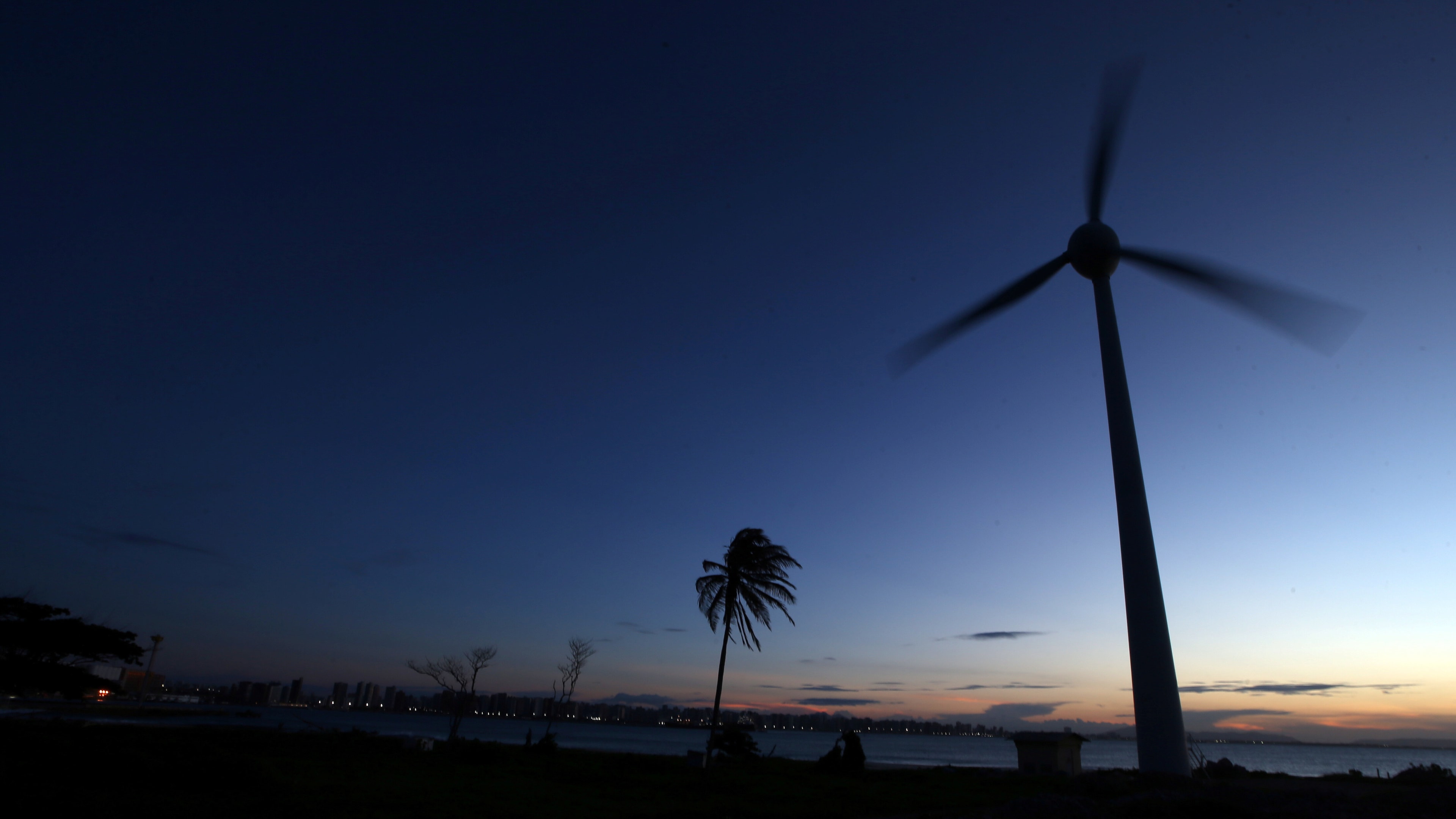What is threatening the success of the Paris Agreement?

Tristan Smith
Reader in Energy and Shipping; Lead, UCL-Energy Shipping Group, University College London (UCL)Stay up to date:
Future of the Environment
This article is published in collaboration with The Conversation.
The Paris climate deal shows that the international community finally gets the science. Our leaders have publicly committed to the idea that we need to decarbonise our energy supplies and undertake a radical transformation of the global economy. But the challenge that Paris has presented the world with is how to convert that rhetoric into the laws and regulations needed to make the goal of the agreement a reality. The final text provides little detail on implementation, just a complex web of pledges with no certainty of when or if they will be fulfilled.
One of the biggest gaps between the reality of our climate situation and the text of the Paris Agreement is in the absence of two sectors that are major contributors to the world’s greenhouse gas emissions. Shipping and aviation were referred to in the world’s previous climate change deal, the Kyoto Protocol, and were still referred to in the draft of the Paris Agreement until just a few days before it was signed. But they disappeared from the final text, perhaps in an attempt to secure a stronger agreement.
This is important, because in combination they are a large and growing share of total CO2emissions. Under current policy and projections, assuming that the world’s total carbon emissions fall by enough to prevent more than 2℃ of warming, by 2050 shipping and aviation could contribute 40% of our CO2 output. Failure to control these sectors will jeopardise the fulfillment of the Paris “well below 2℃” ambition.
Had shipping and aviation been included in the deal, it would most likely have obliged the international bodies responsible for the sectors – the International Maritime Organization (IMO) and the International Civil Aviation Organisation (ICAO) – to develop emissions policies to meet the Paris targets. It would have sent a clear signal about the importance of the sectors in the world’s efforts to combat climate change, to two organisations that have a poor track record of action on greenhouse gas emissions.
Big opportunities
Under current policy, shipping’s CO2 emissions are expected to rise by 50-250% by 2050. Paris gives us a target of reaching net-zero carbon emissions around that time, giving us little more than a ship’s economic working lifetime (typically around 30 years) to turn things around. Exactly what contribution shipping will make is unclear but there will certainly be no room for the sector’s currently expected 1.2-2.8 gigatonnes of carbon emissions in 2050.
Fortunately for shipping, there are plenty of opportunities to address CO2 emissions. The efficiency of both the world’s trade system and the ships that power it can be substantially improved with better logistics and technologies such as friction-resistant coatings and lubrication, and even simply reducing ship speeds. There is a fantastic potential for wind andsolar-powered ships. And ships have the storage capacity for alternative fuels such as hydrogen and ammonia, which are typically less energy dense and so take up more space than fossil fuels.
For aircraft, the timescale of the challenge is similar. Commercial aircraft have a lifespan of around 30 years and demand is growing. But the scale of the technological challenge is greater. There are some further energy efficiency opportunities such as making planes lighter using more composite materials, more aerodynamic designs to reduce the amount of fuel needed, and alternative propulsion systems such as high-bypass turbofans and open-rotor engines.
But unlike with ships, we cannot substantially reduce a flight’s CO2 by reducing aircraft speed or using on-board renewable energy sources. And the weight and space limitations make anything but the most energy dense fuels extremely costly. As a result, biofuels are regularly suggested as a key way to decarbonise aviation. But these cannot solve the non-CO2 climate impacts of flying. For example, aircraft contrails can impact cloud formation and deposit aerosols into the atmosphere, a problem that as yet has no straightforward solution.
Regulation changes needed
The other major challenge for the sectors is that none of these technological solutions will occur without further meaningful regulation. This will have to be led by specific targets and trajectories defined by the sectors’ governing bodies and could include objectives for vehicle CO2 emissions, or new market-based mechanisms to drive companies to change their new and existing craft. Oil remains a fantastically cheap and reliable source of energy, and fuel is a key component of a ship or plane’s operating costs. So without such regulatory changes, the industry is highly unlikely to simply accept more expensive fuel costs.
Achieving that regulation in the shipping sector will be difficult for at least two reasons. By recognising a difference between rich and poor countries, the Paris Agreement contradicts the International Maritime Organisation’s non-discrimination principle, which treats all countries equally, creating a conflict that could hamper change. There are also fears that mitigating greenhouse gases from shipping could increase the costs of transport in a way that might damage world trade and economic growth. This is likely one of the reasons the sector was left out of the Paris text.
These two regulatory hurdles must be overcome, and for the sake of the shipping industry – and the planet – they must be overcome fast. Any procrastination will only increase the rate of change required by the sector and so the turbulence it will experience. Fortunately, the IMO and ICAO are UN agencies driven by governments and so we could see the mood and rhetoric of the Paris summit percolate into these bodies.
But that requires governments to be consistent, something they are not historically good at in these sectors. The world needs to watch and hold its politicians and businesses to account more than ever. And these two sectors need to prepare for some fascinating and rather dramatic changes.
Publication does not imply endorsement of views by the World Economic Forum.
To keep up with the Agenda subscribe to our weekly newsletter.
Author: Tristan Smith is a Lecturer in energy and transport at UCL.
Image: An Airbus A 380 super jumbo jet airplane stands at Frankfurt airport prior to its first passenger flight early morning. REUTERS/Kai Pfaffenbach.
Don't miss any update on this topic
Create a free account and access your personalized content collection with our latest publications and analyses.
License and Republishing
World Economic Forum articles may be republished in accordance with the Creative Commons Attribution-NonCommercial-NoDerivatives 4.0 International Public License, and in accordance with our Terms of Use.
The views expressed in this article are those of the author alone and not the World Economic Forum.
Related topics:
Forum Stories newsletter
Bringing you weekly curated insights and analysis on the global issues that matter.
More on Energy TransitionSee all
Tony Pan
August 27, 2025
Thomas Brostrøm and Sandeep Kashyap
August 26, 2025
Charles Bourgault and Sarah Moin
August 19, 2025
Jürgen Karl Zattler and Adrian Severin Schmieg
August 18, 2025
Piyush Verma
August 18, 2025
Valentin Chomel and Jacques-Alexis Verrecchia
August 14, 2025






